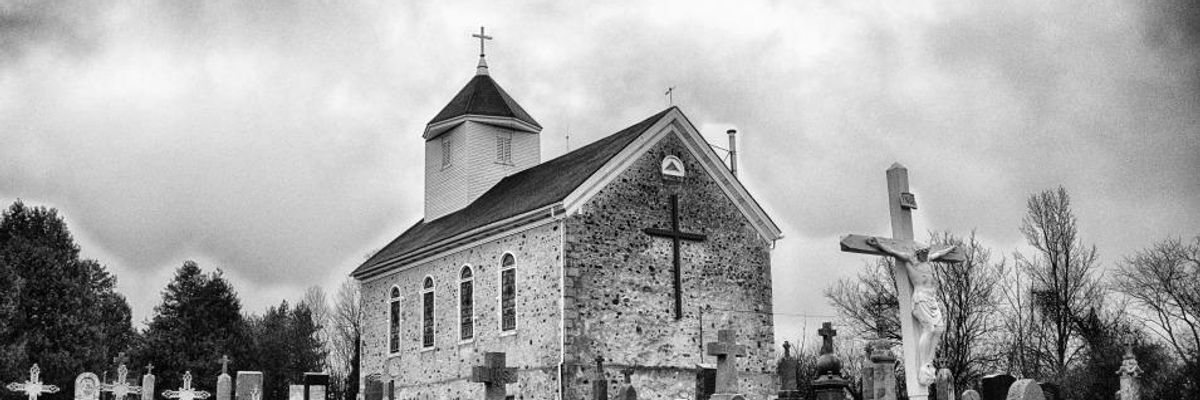In divinity school I learned that a priest represents God to his congregation and represents his congregation to God. We were gathered in a small parlor on an early spring afternoon, with cool sun filtering in slant on the table. How enormously important this arrangement seemed to me at the time -- that ordinary Christians ought to have emissaries to heaven -- and how unspeakable it seems now, in light of the Pennsylvania grand jury report detailing the sexual abuse and torture of some 1,000 children over seven decades by more than 300 members of Catholic clergy.
The crimes documented in the report are not new, with the oldest report dating to the 1940s. In fact, Pennsylvania's statute of limitations for sexual assault places most of the incidents detailed beyond the reach of criminal prosecution. And many of the findings are, by now, grimly familiar: For decades, it appears, the church's hierarchy knowingly kept a protocol of silence, misdirection and lies in place that protected sexual predators, denied justice to victims and endangered innocents.
But there are more damning details in the document, too, which distinguish it from prior discoveries about clerical abuse. One victim reported that the rape he suffered at the hands of his priest was so violent that he sustained severe back injuries that led to his addiction to prescription painkillers; he later overdosed on that medication and died. Another reported that he was made to pose naked in a blasphemous imitation of Christ on the cross, while priests took photographs of his body. There were reports of sadism and prostitution, the use of ropes and whips, the impregnation of teenage girls and the production of child pornography on church property.
We enlightened moderns have a tendency to confront such horrors as physicians, seeking to identify systems that foster wrongdoing and the disorders that inspire it. We will form diagnoses. Generalists will argue that abuse of this kind is a byproduct of the power generated by massive, monocultural, authoritative organizations -- such as the military, for instance, which has its own struggles with sexual abuse and silence. Particularists will argue that Catholic doctrine itself is to blame, with all its premodern sexual prudishness and expectations of priestly celibacy. Shared between the general and the particular approaches will be a medicalizing tendency which holds that people with particular mental illnesses, such as pedophilia, find themselves drawn to and sheltered by organizations that give them credible proximity to children and plentiful opportunities to offend.
Yet each of those explanations leaves something to be desired. Abuse may be typical of major institutions, but the church understands itself to be different from other institutions and ought to be held to higher standards by its own account. Likewise, perfectly modern organizations, free of all traces of medieval superstition -- such as Hollywood, for instance -- also suffer from epidemics of sexual abuse and rape, which suggests that an elimination of the doctrine wouldn't solve the problem. And whatever the abusers' compulsions, that certainly doesn't account for those who, for many years, systematically aided and abetted them, and without whom their damage would have been vastly less.
What was destroyed in Pennsylvania -- and doubtlessly all over this country and the world -- can't be restored in this realm. There are vital measures that would help. States should consider Pennsylvania's moves to reform its criminal and civil statutes of limitation, as suggested by the grand jury's report, which would give victims the opportunity to pursue justice even if their abuse took place long ago. And Catholic lay people, such as myself, must demand that church authorities cooperate fully with law enforcement, having proved themselves utterly incompetent to address this crisis themselves. That there should be mass defrockings is obvious. That there should also be a swath of criminal convictions also seems beyond question. A full surrender is in order; no sacrifice, at this point, is too great. Nothing can amount to the penitence that is deserved.
This is because the nature of the crime is more horrifying and more wretched than one generation can really reckon with. It is the role of priests to represent God to their congregation, and to represent their congregations to God. But there are other powers in the universe, darker ones -- the yawning, ruinous void, whose name is evil. For many decades, in many ordinary parishes, it was this hellish presence that some 300 priests, and dozens of their complicit superiors, represented to their congregations. Evil is real, and it walked the earth in Pennsylvania. It entered through our church doors.

